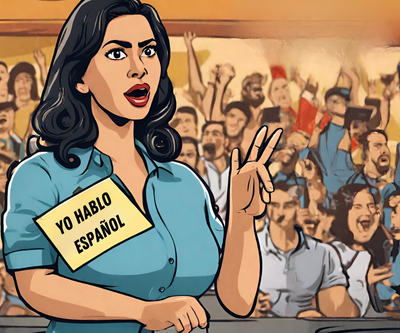The blow came twice as hard, launching Elena back through the door frame of her home, into the seasonal hell she dealt with at the hand of her abusive husband.
It came like clockwork – at the start of each summer when California agricultural workers were laid off, Elena’s husband would drown his laborless days in a six pack of beer. On really bad days, a bottle of cheap tequila would be added to the mix, making for her time spent home, cooking, cleaning, looking after their 13 and 18-year-old sons the most abhorrent. A programmed monster would take hold of their lives from July to September, only to cast itself away when mornings called for working hands and evenings begged for heat.
Elena, a 45-year-old stay-at-home mother living in Central California, was part of the discrete population of Latinas in the US suffering from domestic violence at the hands of their lovers.
41% believed that most domestic abuse victims refuse to come forward and put a stop to the violence due to fear of deportation…
Come summer 2009, however, this Latina made a decision to permanently alter the course of her life when, after her husband served one of the worst beatings she had ever endured.
“I remember that night perfectly. It’s not the scars he left on my body, it’s the memory of the fear that I felt. ‘He’s going to kill me,’ I remember screaming to myself,” narrates Elena over a phone interview.
Had she not made that decision, she could have easily made the list of female homicide victims that died when their lover’s rage went through the roof. In 2015 alone, more than 3,000 girls and adult females were murdered, 50% of them at the hands of male considered to be their intimate partner.
A recent study published by the Centers for Disease Control and Prevention (CDC) found that between 2003 and 2014, of 822 Latinas that were murdered, 75% of them had lost their lives at the hand of their intimate partner.
The majority of these cases involved Latinas aged between 18 and 29.
The report also found that of the 112 Asian Indian/Alaska Native (AI/AN) women killed in a domestic violence scenario during this same period, at least 18% of them fell under the same category. Of the more than 10,000 victims studied, AI/AN and black women had the highest rate of homicide, with over 50% of deaths attributed to their intimate partner, whether that be a husband, a boyfriend or an ex-lover.
Several factors come into play: history of domestic abuse at the hand of the suspect; a love triangle in the relationship; and the most stereotypical of all in Latino culture: jealousy.
A green little monster turned murderer.
According to the CDC, at least 19% of women died at the hand of jealous lovers in the investigated time period. The deaths studied show that in 40% of the cases, an argument preceded the crime and that at least 15% of the victims had suffered some form of abuse at the hand of their current or former partner.
We’ve heard it countless times before – in interviews with select Latina actresses that swear off their culture’s men due to the this issue; when your friend is no longer interested in Latino men because of their dominant traits. The ominous machismo that so vividly represents a dating culture that seems to be rooted in the times of Hernan Cortes himself and his dominion of La Malinche.
Yes, machismo is very much prevalent in our homes and in our circles, and for several reasons including ignorance, mental health issues and fear – the latter being the primary –, it continues to be a taboo topic in Latino households.
The National Latin@ Network found in 2015 that at least 75% of 800 Latin@s nationwide agreed to sexual assault and domestic violence being an issue in the United States. An additional 55% thought that the issue was one specific to the Latino community.
And with good reason. According to the CDC, on average 24 women are victims of domestic abuse per minute. That’s 1,440 victims in just one hour.
Help Power Up Our Latina NewsRoom. Sign up for our ‘BoldLatina News’ or Invest In Our Future Become A ‘BoldLatina Collective’ Member
A staggering 41% believed that most domestic abuse victims refuse to come forward and put a stop to the violence due to fear of deportation, partner retaliation and/or the involvement of Child Protective Services.
These consternations dim dramatically, however, when a life or death incident comes into play. Like it did for Elena and her family.
“At that moment, after having endured so much, you don’t think about all that other stuff. You just want to live.”
Several organizations across the country provide assistance to women and domestic violence victims, from housing and employment to health care and child care services.
If you need legal assistance, Her Justice is here to help.
You can seek help from your local center of the National Coalition Against Domestic Violence.
The National Latin@ Network has a 24-Hour National Domestic Violence Hotline, which can be reached at 1(800) 799-7233.
Joa, is a multimedia journalist, poet, gender rights activist and peace builder based all over SoCal. When not writing and cursing at the world for its lack of grammar proficiency, she enjoys singing to Carla Morrison and taking long walks with Dexter, her Australian Shepherd.


 By
By 



